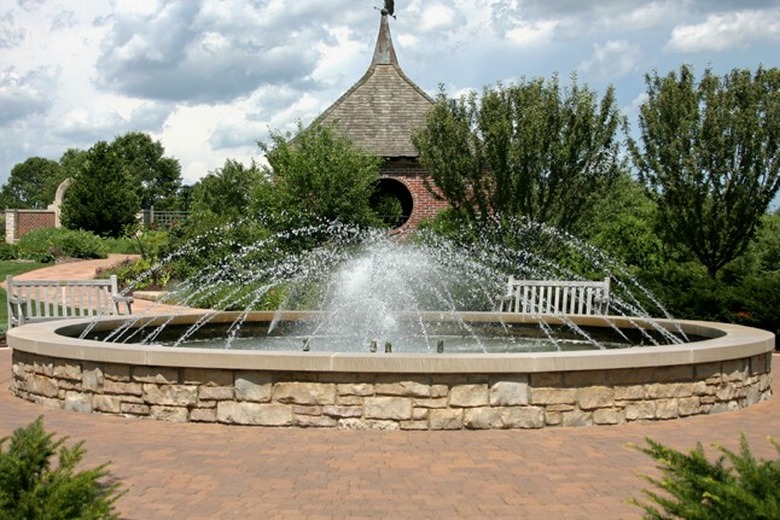How To Winterize An Outdoor Fountain
Things Needed
- Buckets
- Bottle brush and sponges
- Fountain cover, heavy plastic or landscape cloth
- Rope
- Storage area
- Garden gloves
Tip
Use vinegar as a solvent to scrub (or soak) components that have become coated with minerals or algae. If you have fish in your pond, use Kosher salt to scrub. Always rinse carefully, inside and outside. Store fountain parts together. Spring is a long winter away. Include instructions with parts if there's assembly involved in the pieces you've stored. Look for burlap bags at hardware stores and agricultural feed mills that sell seed or other agricultural goods in bulk and before buying bags. Wrap old towells loosely; they'll absorb more water.
Warning
Wear gloves with solid-grip palms to handle fountain parts. Cement can be abrasive in chilly autumn weather and sharp-edged metal can cut cold skin more easily.
Fountains are one of the oldest forms of water features. They played important parts in gardens of the ancient world in Rome, India and the Middle East, providing water for plants and humidity for the air. Winterizing fountains became an issue when Northern Europe discovered the peaceful charm of the fountain. Today, fountains grace city parks and home gardens even further north. All require the same maintenance as any other water pipe-filled object does when the cold winds blow.
Step 1
Drain the fountain of all water before the first frost advisory of the season. Make sure all tubing and fixtures are completely drained. It can make a real mess if you have to finish draining tubes in the laundry sink. If your fountain is in a fish pond or incorporated into a waterfall, clean out parts that cannot be moved to remove algae and bacteria—the fish don't need the oxygenation during the winter—they will be "hibernating" on the bottom of the pond.
- Fountains are one of the oldest forms of water features.
- They played important parts in gardens of the ancient world in Rome, India and the Middle East, providing water for plants and humidity for the air.
Step 2
Disassemble the fountain if possible. Many garden fountains have a removable decoration, a bowl or tiers on a base. Yours may sit in a pond or be freestanding with gravel in the base. Whatever the design, take the parts you can remove indoors for the winter to protect them from the elements. Let tubes and fountain sections dry completely before storing.
Step 3
Clean the pump to remove algae, plant material or fish mulm (the gloppy brown fish waste at the bottom of the pond) from the pump and its filters. If the pump is large, check and lubricate it according to directions. Store the pump inside for the winter if it can be removed from the pond or filter where it is housed.
- Disassemble the fountain if possible.
- Store the pump inside for the winter if it can be removed from the pond or filter where it is housed.
Step 4
Wrap the fountain in a fountain cover, landscaping cloth or heavy plastic. Fountain covers are made of polyester coated with polyvinyl chloride (PVC) to make them waterproof, but draping a landscape cloth or plastic drop cloth will accomplish the same shelter. Before covering, roll burlap or old bath towels and fill bowls and depressions. The fabric will wick water away from the surface so that freezing water will not expand against the bowl but over its edge.
Step 5
Send any pumps away for repair or order any parts now to avoid delays next spring. Replace or order corroded or rotted metal or vinyl tubing now.
